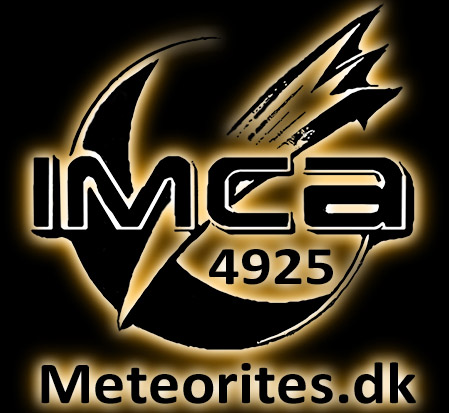Special Achondrites
Erg Chech 002, ungrouped achondrite
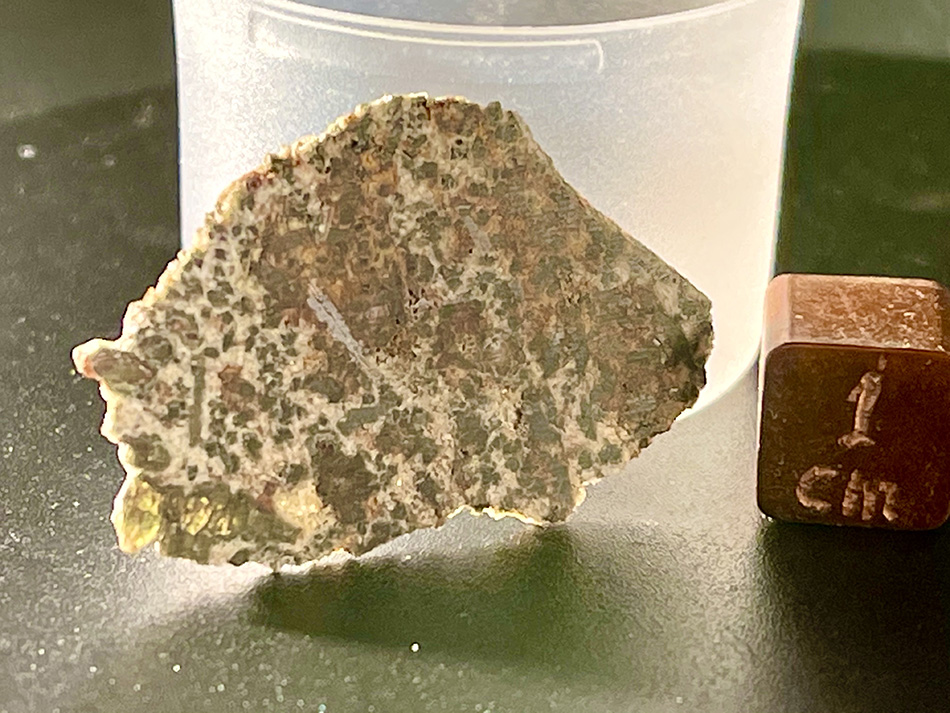
#50705 Erg Chech 002 €120,- kr. 900,-
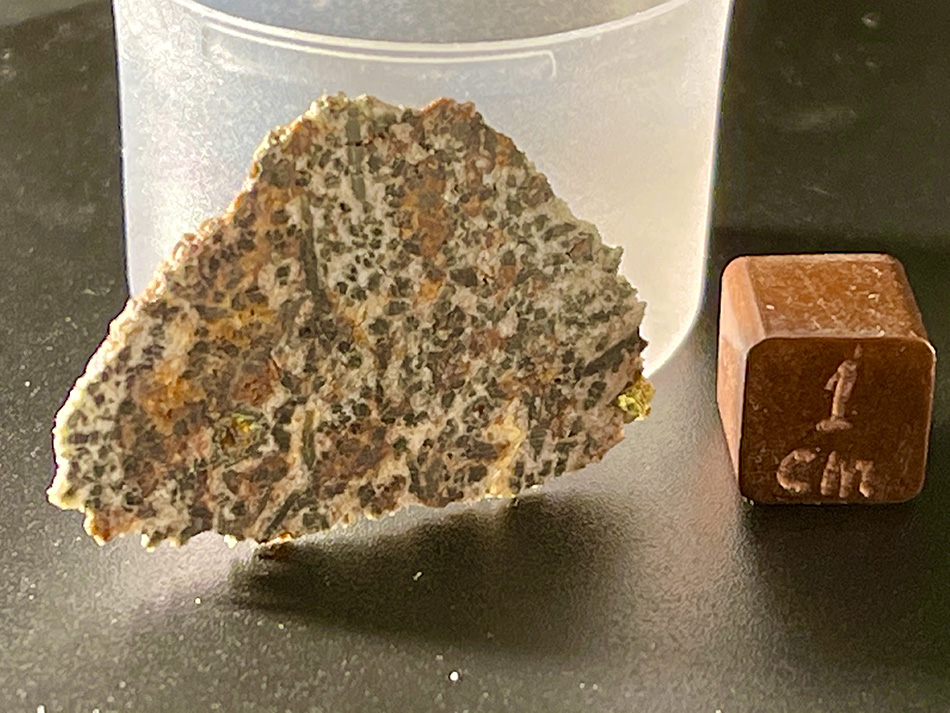
#50704 Erg Chech 002 €120,- kr. 900,-
#50704 Erg Chech 002 €120,- kr. 900,-
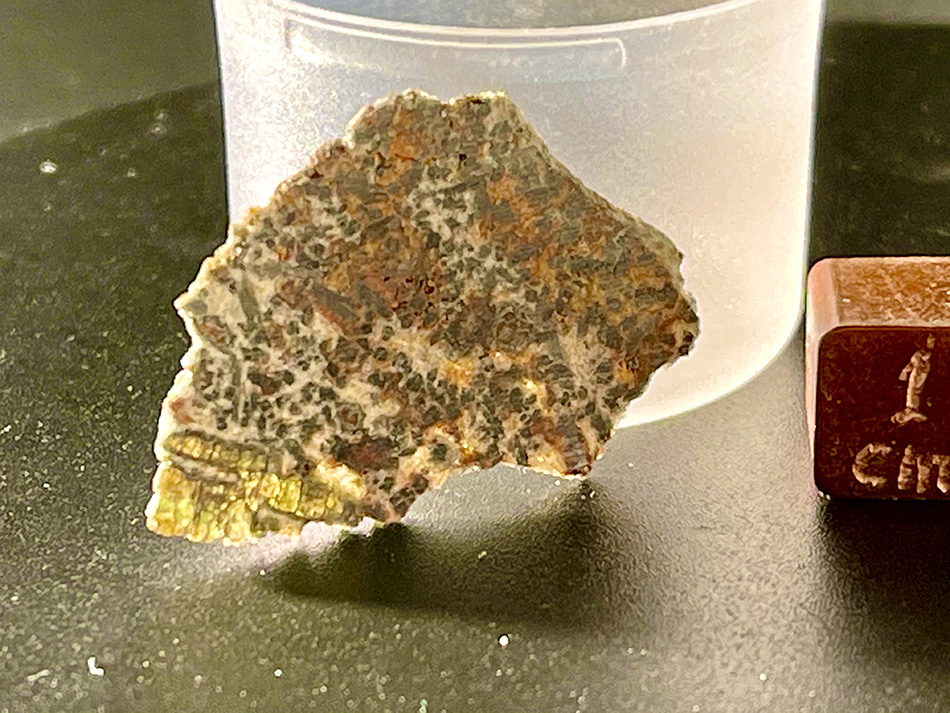
#50703 Erg Chech 002 SOLD
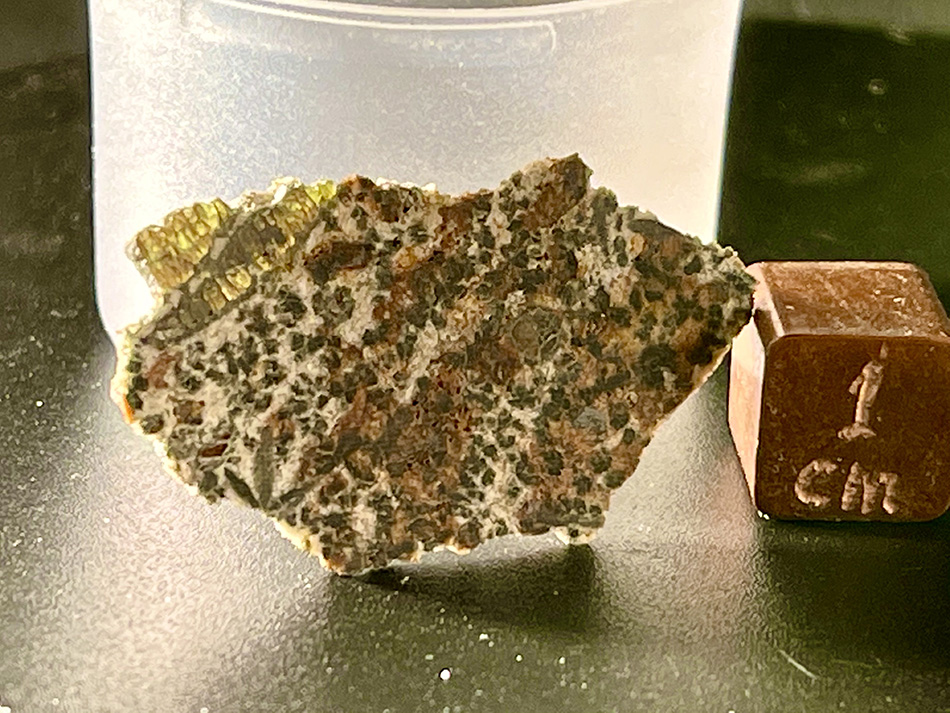
#50702 Erg Chech 002 – SOLD
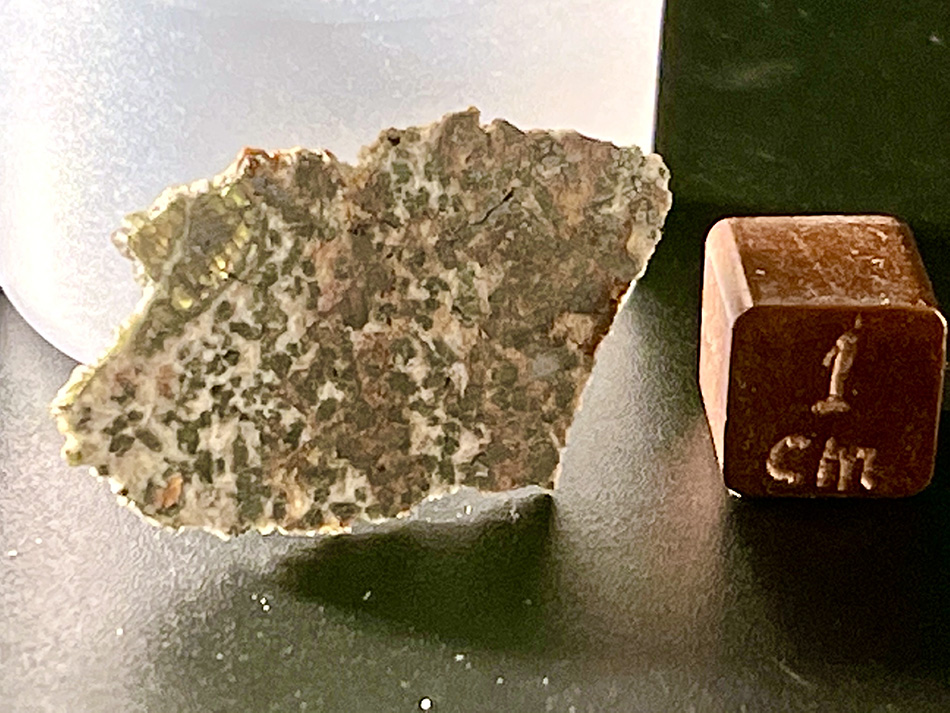
#50701 Erg Chech 002 SOLD (this slice is in the video)
Erg Chech 002 explained:
A meteorite crash-landed in the Sahara Desert in 2020. The 4.6 billion-year-old primeval rock is the oldest known sample that may hint at a distant baby relative of Earth.
Dating the aged mineral of the meteorite revealed that it originated in the early versions of our solar system from the crust of a rocky celestial body in the midst of developing into a new planet – a protoplanet.
Meteorite Proof of Distant Earth Relatives
A study published in the journal Proceedings of the National Academy of Sciences of the United States entitled, “A 4,565-My-old andesite from an extinct chondritic protoplanet” describes the meteorite as Erg Chech 002 as a rare example of a lost baby planet surviving since the planet was either destroyed or absorbed by a bigger planet during the early days of the solar system.
Erg Chech 002 Rarity
Amount thousands of rocky meteorites, Erg Chech 002 stood out. Radioactive isotopes, aluminum, and magnesium content indicated that the meteorite originated in an ancient celestial body dating back to roughly 4.566 billion years ago.
Ec 002’s chemical compositions also revealed that it merged from partly-melted magma reservoirs in the protoplanet’s crust.
Commonly, meteorites originate from sources with basaltic crusts due to rapidly cooled iron and magnesium-rich lava. On the other hand, chemical tests revealed that EC 002’s parent’s crust was mostly comprised of andesite, rich in silica.
The authors of the study reported that EC 002 is the oldest magmatic sample analyzes to date that sheds light on the formation of the primordial crusts of the oldest protoplanets.
While experts stress the rarity of EC 002, various studies found that silica-infused andesite crusts were fairly common during the protoplanet=-forming stage of the solar system long before the Earth was formed.
During the volatile period of the solar system’s planetary birth, most protoplanets likely weren’t able to exceed infancy according to some studies. Either these primordial celestial bodies were smashed to bits during the collision with other bodies, or were absorbed by bigger rocky planets such as Mercury, Venus, Earth, and Mars leaving only traces behind such as EC 002.
